
Corsair Carbide Series 330R Review
Manufacturer: CorsairUK price (as reviewed): £76.00 (inc VAT)
US price (as reviewed): $99.99 (ex Tax)
As well as the excellent Carbide Air 540, Corsair also showcased a chassis with a more traditional layout at Computex, namely the Carbide 330R. While it's based loosely on the Carbide 200R, the 330R has a much more minimalist design, and hand in hand with that comes a focus on low noise. It manages to come in at under £80, although bear in mind that Fractal's Define R4 can also be had for around the same price at the moment.
The 330R sticks with some standard design choices to indicate its low noise status. You'll find smooth, uninterrupted black steel down the sides of the case as well as an all-plastic front panel, the door for which has a brushed aluminium effect and is backed by dense noise dampening foam.
The door itself is a little unusual in its design, however. It's held shut quite tightly by a pair of clips, and though we prefer magnets, these allow the hinges to be repositioned to the opposite side, with the effect being that you can actually have it open to the left or the right, depending on what best suits your set-up. Also, the door doesn't close firmly against the front panel, but rather leaves a space behind it into which air is drawn by the intake fan. The sides of this space are fully open to allow plenty of air in, but are angled away from the front of the chassis, supposedly to deflect noise from the front fan away from the user.
The build quality of the 330R is mostly very good, although it's significantly lighter than the competition. The two side panels are rigidly attached, for example, and the quality and finish of the materials used is also up to scratch. The core chassis is also sturdy, and proves difficult to bend or flex in any direction, while the rubber lined feet provide lots of grip. One weakness, however, is the thin plastic door, which is easy to bend and press inwards thanks to the space behind it. Nevertheless, it opens easily and isn't wobbly on its hinges, so in normal use it will be fine.
In the middle of the roof is a plastic clip-off section, which is backed by the same rigid foam found behind the door, but unfortunately isn't the sturdiest thing around. It covers the two 140mm/120mm fan mounts here, but this means that even if you wish to only make use of one fan mount, you'll lose the benefit of the noise proof foam here entirely. When it's attached, the roof still isn't completely sealed, so it's unlikely to be as effective as Fractal's ModuVent solution. Finally, the lack of any dust filters here means there's clear room for improvement in this section.
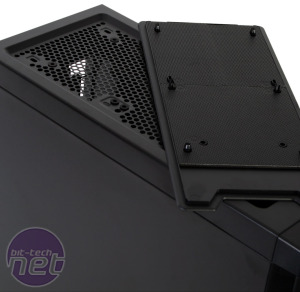
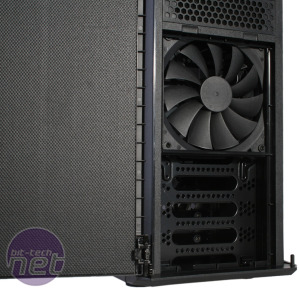
Click to enlarge - The roof panel has a removable mid section for when the roof fan mounts are utilised
Behind the front door is an easily removed dust filter for the front intake mounts. By default, it guards a 140mm fan, and it's good to see a larger model fan being used as these tend to shift more air with less noise. That said, the bundled exhaust fan is a standard 120mm model. There's also room below the supplied front fan for a second one up to 140mm in size. Above this section are the optical bays, the covers for which need to be pushed out from the inside and are also protected by dust filtering material.
The front I/O panel is the standard selection of USB 3.0 and audio jacks, as well as the wobbly power and reset buttons. It's actually the same front panel used on the Carbide 200R, which means that Corsair has opted not to include any fan control. This is an odd and glaring omission on a case designed for low noise, and means that Corsair is putting all its faith in the efficiency of its fans, which will have to be able to shift plenty of air with minimal noise.
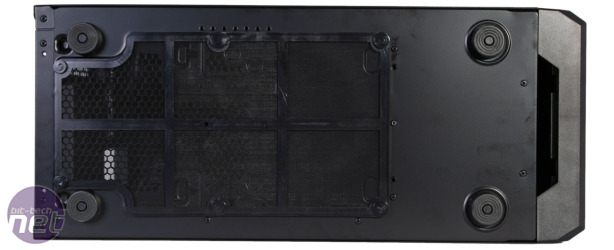
Click to enlarge - The lower dust filter covers the non-existent bottom fan mount as well as the PSU
The lower dust filter is magnetic, meaning that it won't rattle around, but the low clearance of the case means it's all but impossible to get on and off without tilting the case on its side, which is simply bad design. Strangely, it's also big enough to cover a lower fan mount, but the 330R doesn't have one here. Even more bizarre is the fact that the Carbide 200R does have a bottom fan mount, but its lower dust filter is a slide out one which only covers the PSU – this would have been a far more sensible solution for the 330R.
Sound damping foam is utilised in copious amounts on the two side panels, which are held in place with thumbscrews and a notch and rails system. The front panel also pulls cleanly away from the chassis, although there's little reason to do this other than to make it easier to install a secondary front fan. Meanwhile, the roof is riveted in place, so only the clip-out section here can be removed.
Specifications
- Dimensions (mm) 210 x 495 x 486 (W x D x H)
- Material Steel, plastic
- Available colours Black
- Weight 6.98kg
- Front panel Power, reset, 2 x USB 3, stereo, microphone
- Drive bays 3 x external 5.25in, 4 x internal 3.5in/2.5-in
- Form factor(s) ATX, micro-ATX
- Cooling 2 x 140mm/120mm front fan mounts (1 x 140mm fan included), 1 x 120mm rear fan mount (fan included), 2 x 140mm/120mm roof fan mounts (fans not included)
- CPU cooler clearance 160mm
- Maximum graphics card length 450mm
- Extras Removable dust filters, left or right opening door

MSI MPG Velox 100R Chassis Review
October 14 2021 | 15:04

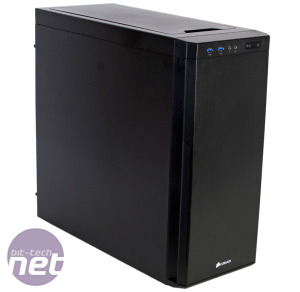
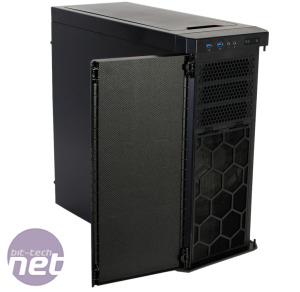
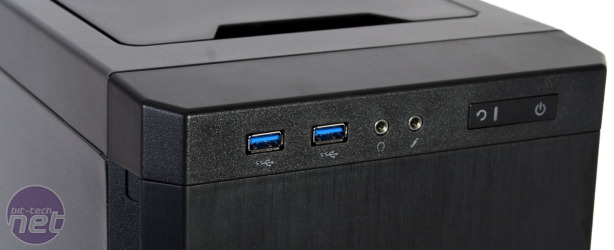







Want to comment? Please log in.